Jingran Xu
National Mobile Communications Research Laboratory, Southeast University, Nanjing, China
Patch-based Reconstruction for Unsupervised Dynamic MRI using Learnable Tensor Function with Implicit Neural Representation
May 28, 2025Abstract:Dynamic MRI plays a vital role in clinical practice by capturing both spatial details and dynamic motion, but its high spatiotemporal resolution is often limited by long scan times. Deep learning (DL)-based methods have shown promising performance in accelerating dynamic MRI. However, most existing algorithms rely on large fully-sampled datasets for training, which are difficult to acquire. Recently, implicit neural representation (INR) has emerged as a powerful scan-specific paradigm for accelerated MRI, which models signals as a continuous function over spatiotemporal coordinates. Although this approach achieves efficient continuous modeling of dynamic images and robust reconstruction, it faces challenges in recovering fine details and increasing computational demands for high dimensional data representation. To enhance both efficiency and reconstruction quality, we propose TenF-INR, a novel patch-based unsupervised framework that employs INR to model bases of tensor decomposition, enabling efficient and accurate modeling of dynamic MR images with learnable tensor functions. By exploiting strong correlations in similar spatial image patches and in the temporal direction, TenF-INR enforces multidimensional low-rankness and implements patch-based reconstruction with the benefits of continuous modeling. We compare TenF-INR with state-of-the-art methods, including supervised DL methods and unsupervised approaches. Experimental results demonstrate that TenF-INR achieves high acceleration factors up to 21, outperforming all comparison methods in image quality, temporal fidelity, and quantitative metrics, even surpassing the supervised methods.
Efficient Channel Estimation for Millimeter Wave and Terahertz Systems Enabled by Integrated Super-resolution Sensing and Communication
Jul 30, 2024


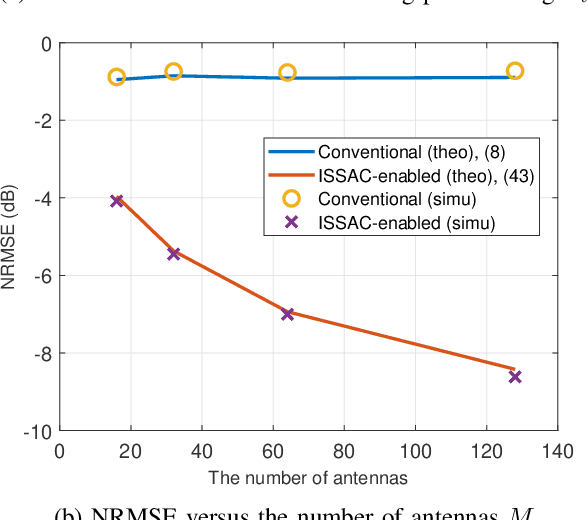
Abstract:Integrated super-resolution sensing and communication (ISSAC) has emerged as a promising technology to achieve extremely high precision sensing for those key parameters, such as the angles of the sensing targets. In this paper, we propose an efficient channel estimation scheme enabled by ISSAC for millimeter wave (mmWave) and TeraHertz (THz) systems with a hybrid analog/digital beamforming architecture, where both the pilot overhead and the cost of radio frequency (RF) chains are significantly reduced. The key idea is to exploit the fact that subspace-based super-resolution algorithms such as multiple signal classification (MUSIC) can estimate channel parameters accurately without requiring dedicate a priori known pilots. In particular, the proposed method consists of two stages. First, the angles of the multi-path channel components are estimated in a pilot-free manner during the transmission of data symbols. Second, the multi-path channel coefficients are estimated with very few pilots. Compared to conventional channel estimation schemes that rely solely on channel training, our approach requires the estimation of much fewer parameters in the second stage. Furthermore, with channel multi-path angles obtained, the beamforming gain can be achieved when pilots are sent to estimate the channel path gains. To comprehensively investigate the performance of the proposed scheme, we consider both the basic line-of-sight (LoS) channels and more general multi-path channels. We compare the performance of the minimum mean square error (MMSE) of channel estimation and the resulting beamforming gains of our proposed scheme with the traditional scheme that rely exclusively on channel training. It is demonstrated that our proposed method significantly outperforms the benchmarking scheme. Simulation results are presented to validate our theoretical findings.
Performance Analysis of Hybrid Cellular and Cell-free MIMO Network
Jun 04, 2024Abstract:Cell-free wireless communication is envisioned as one of the most promising network architectures, which can achieve stable and uniform communication performance while improving the system energy and spectrum efficiency. The deployment of cell-free networks is envisioned to be a longterm evolutionary process, in which cell-free access points (APs) will be gradually introduced into the communication network and collaborate with the existing cellular base stations (BSs). To further explore the performance limits of hybrid cellular and cell-free networks, this paper develops a hybrid network model based on stochastic geometric toolkits, which reveals the coupling of the signal and interference from both the cellular and cell-free networks. Specifically, the conjugate beamforming is applied in hybrid cellular and cell-free networks, which enables user equipment (UE) to benefit from both cellular BSs and cell-free APs. The aggregate signal received from the hybrid network is approximated via moment matching, and coverage probability is characterized by deriving the Laplace transform of the interference. The analysis of signal strength and coverage probability is verified by extensive simulations.
Little Pilot is Needed for Channel Estimation with Integrated Super-Resolution Sensing and Communication
Apr 16, 2024Abstract:Integrated super-resolution sensing and communication (ISSAC) is a promising technology to achieve extremely high sensing performance for critical parameters, such as the angles of the wireless channels. In this paper, we propose an ISSAC-based channel estimation method, which requires little or even no pilot, yet still achieves accurate channel state information (CSI) estimation. The key idea is to exploit the fact that subspace-based super-resolution algorithms such as multiple signal classification (MUSIC) do not require a priori known pilots for accurate parameter estimation. Therefore, in the proposed method, the angles of the multi-path channel components are first estimated in a pilot-free manner while communication data symbols are sent. After that, the multi-path channel coefficients are estimated, where very little pilots are needed. The reasons are two folds. First, compared to the conventional channel estimation methods purely relying on channel training, much fewer parameters need to be estimated once the multi-path angles are accurately estimated. Besides, with angles obtained, the beamforming gain is also enjoyed when pilots are sent to estimate the channel path gains. To rigorously study the performance of the proposed method, we first consider the basic line-of-sight (LoS) channel. By analyzing the minimum mean square error (MMSE) of channel estimation and the resulting beamforming gains, we show that our proposed method significantly outperforms the conventional methods purely based on channel training. We then extend the study to the more general multipath channels. Simulation results are provided to demonstrate our theoretical results.
MIMO Symbiotic Radio with Massive Passive Devices: Asymptotic Analysis and Precoding Optimization
Jun 28, 2022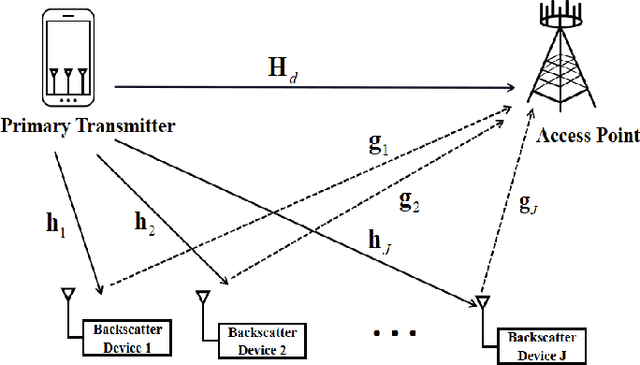
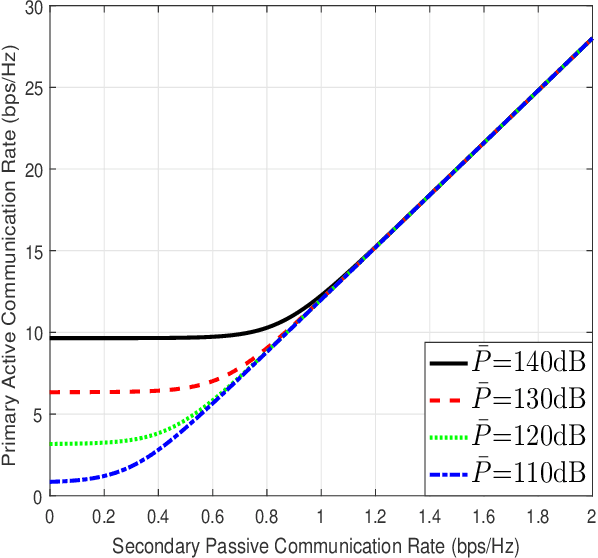
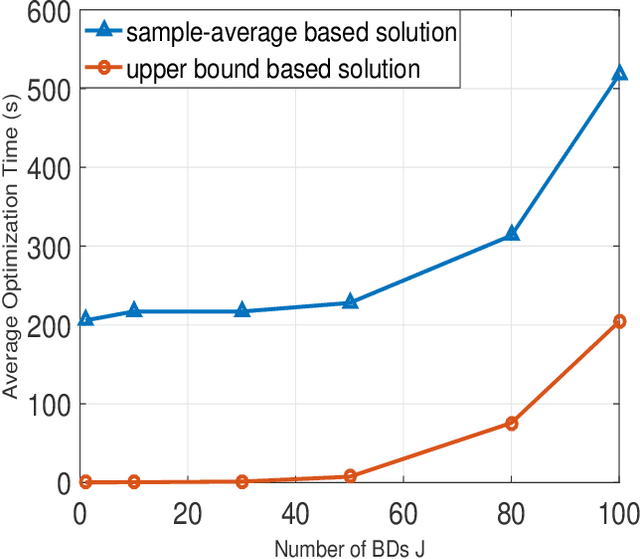
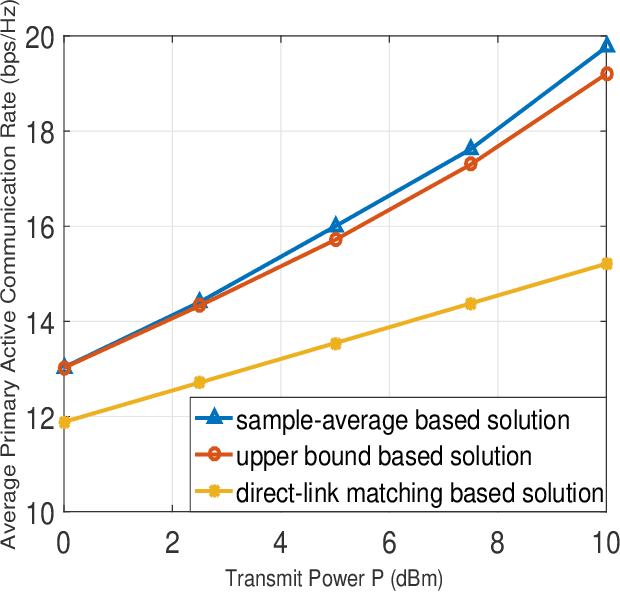
Abstract:Symbiotic radio has emerged as a promising technology for spectrum- and energy-efficient wireless communications, where the passive secondary backscatter devices (BDs) reuse not only the spectrum but also the power of the active primary users to transmit their own information. In return, the primary communication links can be enhanced by the additional multipaths created by the BDs. This is known as the mutualism relationship of symbiotic radio. However, due to the severe double-fading attenuation of the passive backscattering links, the enhancement of the primary link provided by one single BD is extremely limited. To address this issue and enable full mutualism of symbiotic radio, in this paper, we study multiple-input multiple output (MIMO) symbiotic radio communication systems with massive BDs. We first derive the achievable rates of the primary active communication and secondary passive communication, and then consider the asymptotic regime as the number of BDs goes large, for which closed-form expressions are derived to reveal the relationship between the primary and secondary communication rates. Furthermore, the precoding optimization problem is studied to maximize the primary communication rate while guaranteeing that the secondary communication rate is no smaller than a certain threshold. Simulation results are provided to validate our theoretical studies.
Rate-Region Characterization and Channel Estimation for Cell-Free Symbiotic Radio Communications
May 17, 2022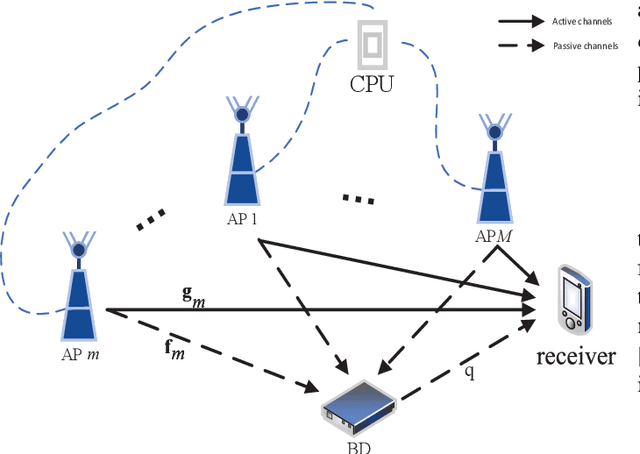
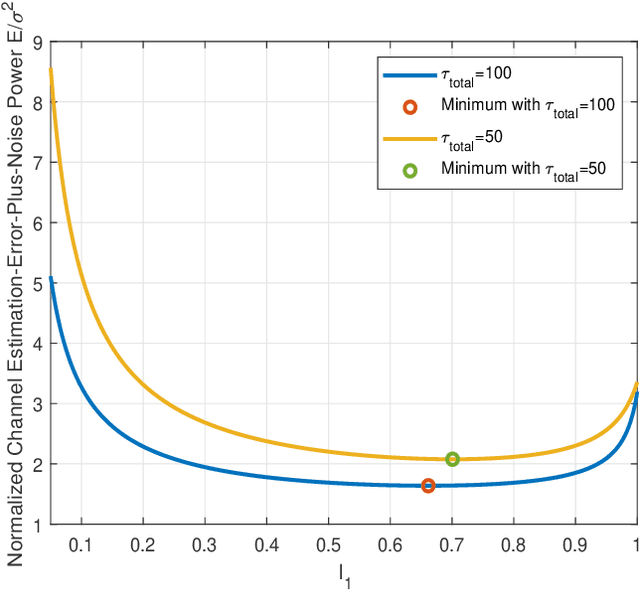
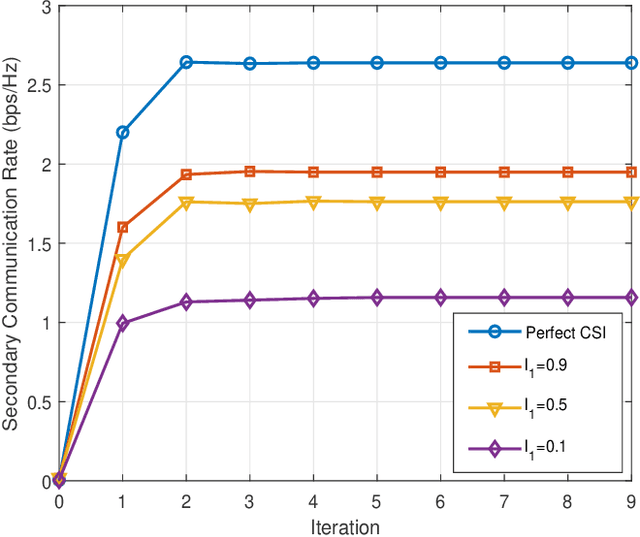
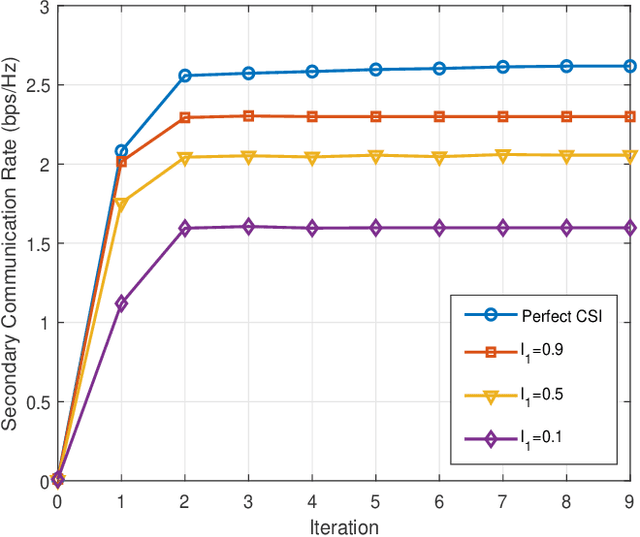
Abstract:Cell-free massive MIMO and symbiotic radio communication have been recently proposed as the promising beyond fifth-generation (B5G) networking architecture and transmission technology, respectively. To reap the benefits of both, this paper studies cell-free symbiotic radio communication systems, where a number of cell-free access points (APs) cooperatively send primary information to a receiver, and simultaneously support the passive backscattering communication of the secondary backscatter device (BD). We first derive the achievable communication rates of the active primary user and passive secondary user under the assumption of perfect channel state information (CSI), based on which the transmit beamforming of the cellfree APs is optimized to characterize the achievable rate-region of cell-free symbiotic communication systems. Furthermore, to practically acquire the CSI of the active and passive channels, we propose an efficient channel estimation method based on two-phase uplink-training, and the achievable rate-region taking into account CSI estimation errors are further characterized. Simulation results are provided to show the effectiveness of our proposed beamforming and channel estimation methods.
Characterizing the Energy-Efficiency Region of Symbiotic Radio Communications
May 08, 2022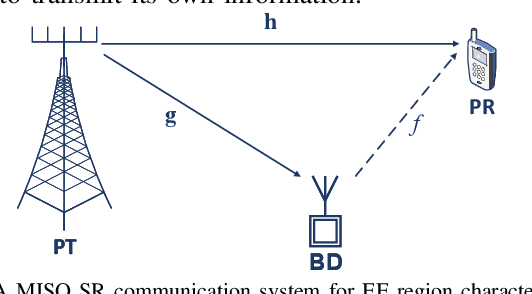
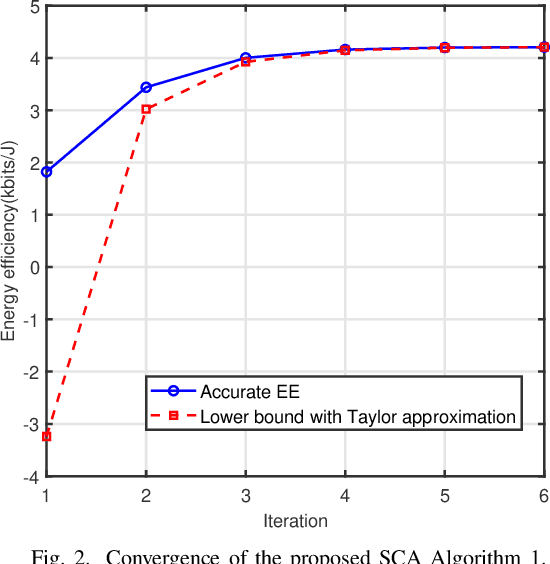
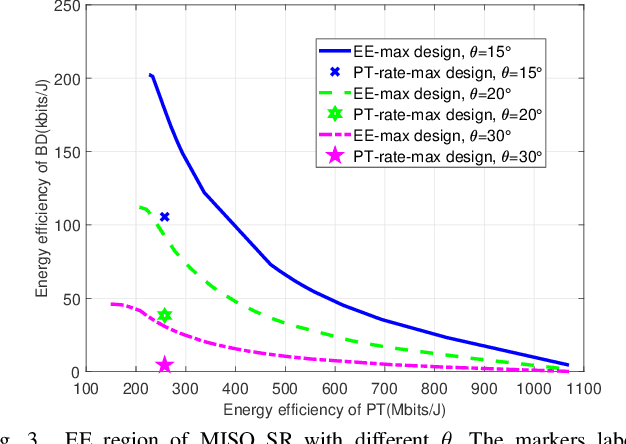
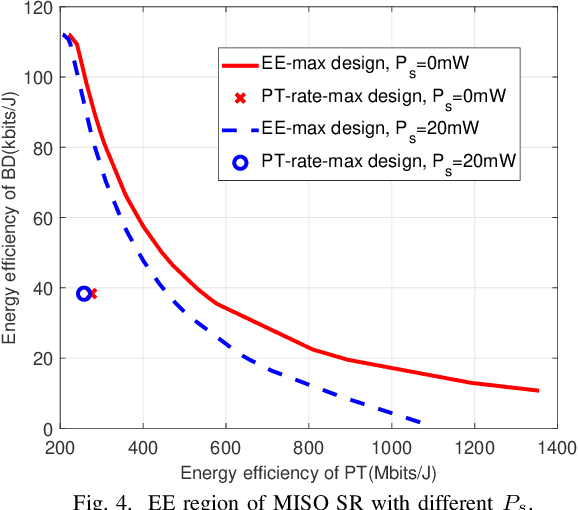
Abstract:Symbiotic radio (SR) communication is a promising technology to achieve spectrum- and energy-efficient wireless communication, by enabling passive backscatter devices (BDs) reuse not only the spectrum, but also the power of active primary transmitters (PTs). In this paper, we aim to characterize the energy-efficiency (EE) region of multiple-input single-output (MISO) SR systems, which is defined as all the achievable EE pairs by the active PT and passive BD. To this end, we first derive the maximum individual EE of the PT and BD, respectively, and show that there exists a non-trivial trade-off between these two EEs. To characterize such a trade-off, an optimization problem is formulated to find the Pareto boundary of the EE region by optimizing the transmit beamforming and power allocation. The formulated problem is non-convex and difficult to be directly solved. An efficient algorithm based on successive convex approximation (SCA) is proposed to find a Karush-Kuhn-Tucker (KKT) solution. Simulation results are provided to show that the proposed algorithm is able to effectively characterize the EE region of SR communication systems.
Cell-Free Symbiotic Radio: Channel Estimation Method and Achievable Rate Analysis
Jun 11, 2021

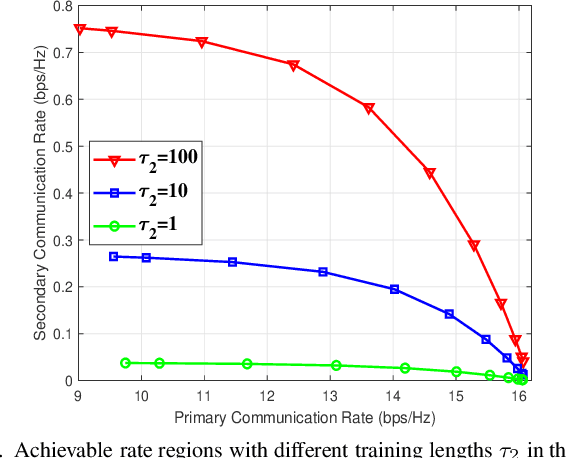
Abstract:Cell-free massive MIMO and symbiotic radio are promising beyond 5G (B5G) networking architecture and transmission technology, respectively. This paper studies cell-free symbiotic radio systems, where a number of distributed access points (APs) cooperatively send primary information to a receiver, and simultaneously support the backscattering communication of the secondary backscatter device (BD). An efficient two-phase uplink-training based channel estimation method is proposed to estimate the direct-link channel and cascaded backscatter channel, and the achievable primary and secondary communication rates taking into account the channel estimation errors are derived. Furthermore, to achieve a flexible trade-off between the primary and secondary communication rates, we propose a low-complexity weighted-maximal-ratio transmission (weighted-MRT) beamforming scheme, which only requires local processing at each AP without having to exchange the estimated channel state information. Simulation results are provided to show the impact of the channel training lengths on the performance of the cell-free symbiotic radio systems.
Enabling Full Mutualism for Symbiotic Radio with Massive Backscatter Devices
Jun 10, 2021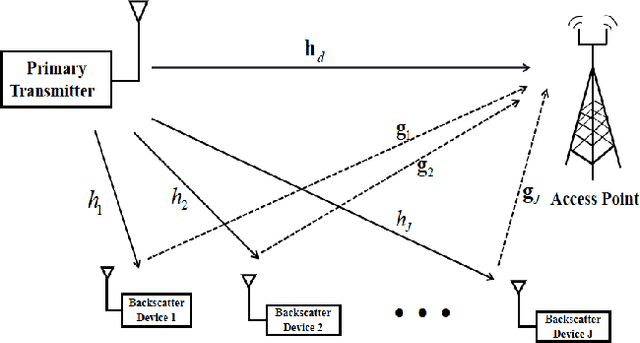
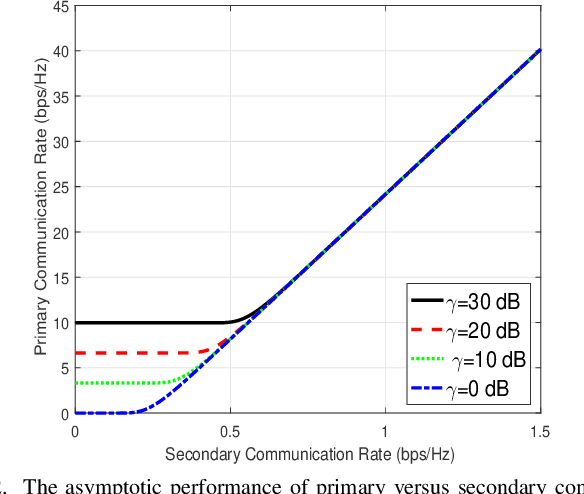
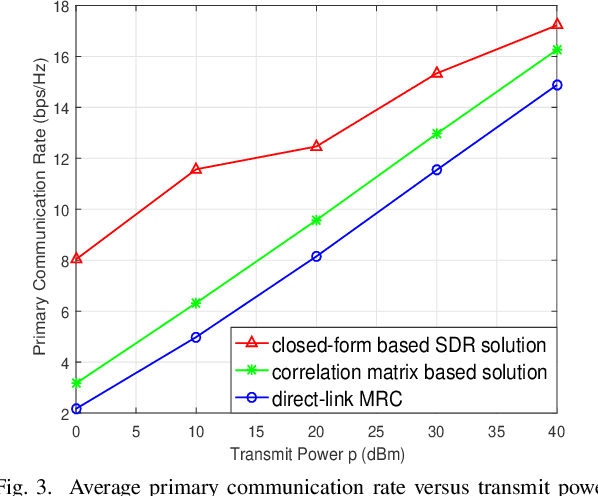
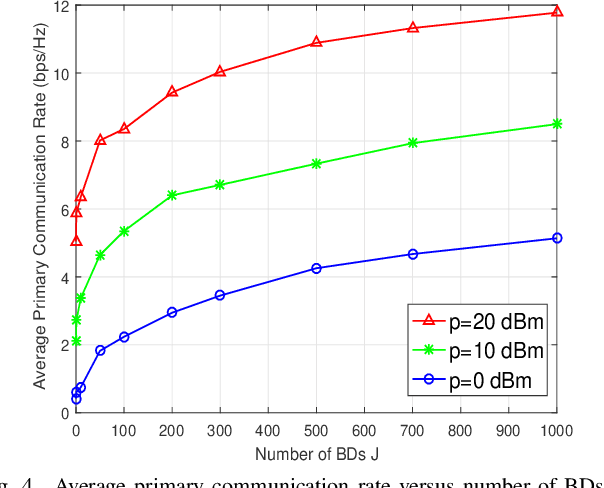
Abstract:Symbiotic radio is a promising technology to achieve spectrum- and energy-efficient wireless communications, where the secondary backscatter device (BD) leverages not only the spectrum but also the power of the primary signals for its own information transmission. In return, the primary communication link can be enhanced by the additional multipaths created by the BD. This is known as the mutualism relationship of symbiotic radio. However, as the backscattering link is much weaker than the direct link due to double attenuations, the improvement of the primary link brought by one single BD is extremely limited. To address this issue and enable full mutualism of symbiotic radio, in this paper, we study symbiotic radio with massive number of BDs. For symbiotic radio multiple access channel (MAC) with successive interference cancellation (SIC), we first derive the achievable rate of both the primary and secondary communications, based on which a receive beamforming optimization problem is formulated and solved. Furthermore, considering the asymptotic regime of massive number of BDs, closed-form expressions are derived for the primary and the secondary communication rates, both of which are shown to be increasing functions of the number of BDs. This thus demonstrates that the mutualism relationship of symbiotic radio can be fully exploited with massive BD access.
Learning Effective Representations for Person-Job Fit by Feature Fusion
Jun 12, 2020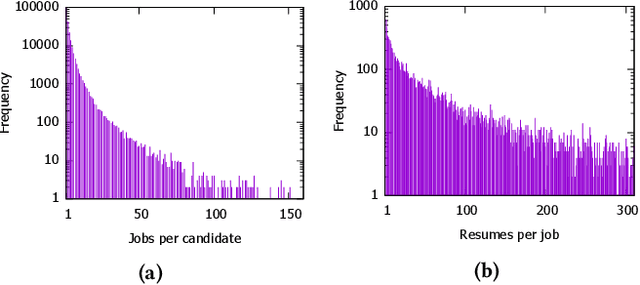
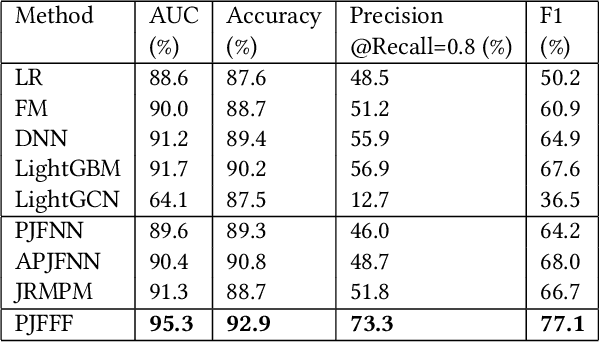


Abstract:Person-job fit is to match candidates and job posts on online recruitment platforms using machine learning algorithms. The effectiveness of matching algorithms heavily depends on the learned representations for the candidates and job posts. In this paper, we propose to learn comprehensive and effective representations of the candidates and job posts via feature fusion. First, in addition to applying deep learning models for processing the free text in resumes and job posts, which is adopted by existing methods, we extract semantic entities from the whole resume (and job post) and then learn features for them. By fusing the features from the free text and the entities, we get a comprehensive representation for the information explicitly stated in the resume and job post. Second, however, some information of a candidate or a job may not be explicitly captured in the resume or job post. Nonetheless, the historical applications including accepted and rejected cases can reveal some implicit intentions of the candidates or recruiters. Therefore, we propose to learn the representations of implicit intentions by processing the historical applications using LSTM. Last, by fusing the representations for the explicit and implicit intentions, we get a more comprehensive and effective representation for person-job fit. Experiments over 10 months real data show that our solution outperforms existing methods with a large margin. Ablation studies confirm the contribution of each component of the fused representation. The extracted semantic entities help interpret the matching results during the case study.
 Add to Chrome
Add to Chrome Add to Firefox
Add to Firefox Add to Edge
Add to Edge